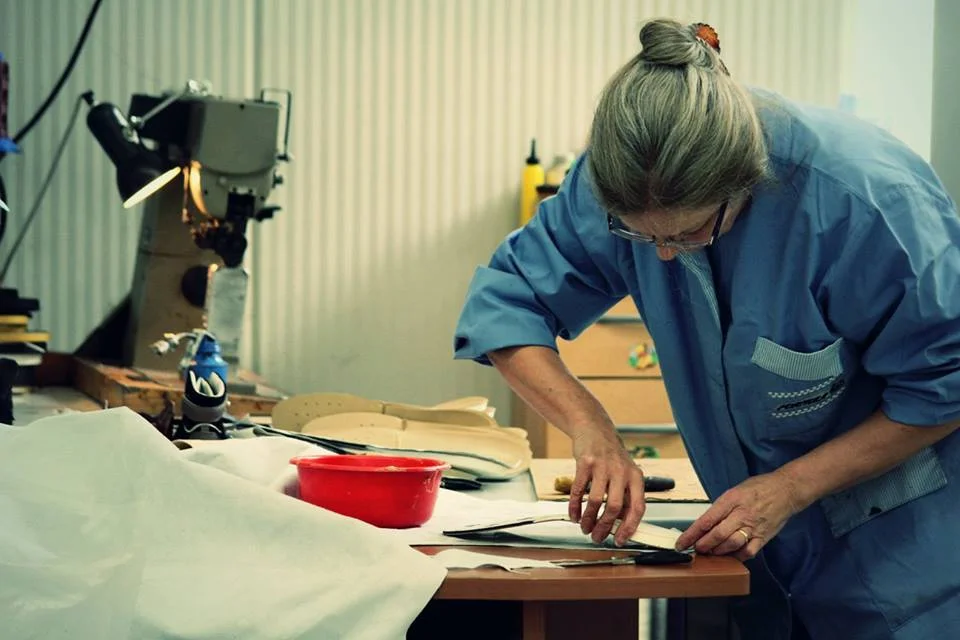Meet the Artists : An Introduction to Our Italian Factory
Nowhere is the artistry of shoemaking more prevalent than in Italy. Shoes proudly stamped with“made in Italy” carry with them a sense of quality and comfort like no other.
As I mentioned in an earlier post, the goal of being able to make shoes in Italy is one I have been working on for a while.
Located on the eastern coast (not far from the Adriatic Sea), the factory is a family-run affair. Led by Silvio, his wife Giuditta and their daughter Sonia, shoe making (specifically “performance” shoe making) is in their blood.
Silvio’s innovation and (hand)craft is the stuff of legend in the world of motorsport. With a longstanding history in racing's history, Silvio and the family have handcrafted shoes for some of the biggest names in the sport (including 4x Formula 1 Driver’s Champion Alain Prost). From Formula 1 drivers and mechanics to automative technicians in other races (rally, uphill, etc.), Silvio and the team apply continuous research of innovative materials to their shoemaking craft.
And it is this combination of “performance driven” approach to design alongside meticulous handcraftsmanship that has me so excited to be working with them.
One of the biggest advantages to working with the family is that things happen quickly. In most situations, the timeline for creating a new shoe design is 18 months. In the case of the CHUKKA, we were able to cut it down to 5 months. The biggest reason: Sonia gets things done.
The initial prototype of our CHUKKA, handmade in Italy.
I have worked closely with Sonia over the course of the CHUKKA development. After sending her some sketches along with a last, she and the team quickly turned around sample patterns en route to putting together the prototype.
Being able to quickly see how the shoe looks in 3D (versus the 2D sketch) helped us make those final decisions on the details (which you don’t know until know).
From here we were ready to choose a leather tannery to work with. As with most things manufacturing-related, finding a supplier that is able to create high-quality materials without raking you over the coals with order minimums* is a huge advantage. Given Sonia’s relationships with some of the top Italian tanneries, we were able source a great Italian suede quickly.
While Italy has plenty of good sole suppliers, I knew I wanted to work with natural hevea soles handmade in France. It is no exaggeration to say that these are the world’s most comfortable soles. They will not disappoint.
Bringing all of these uniquely handcrafted components together for a single design has me excited to get these boots out to you. Able to be worn with anything from jeans and chinos to shorts, they are easily the most versatile (and personal favorite) pair of shoes I have.
- Rory
*In manufacturing, you are constantly trying to find the MOQ balance (minimum order quantity). For example, with a shoe factory you will have a minimum order per style and then per color. So if a factory has the MOQ of 200, that means we need to order 200 Chukkas in the same color. If we are doing two colors, that is a total of 400 pairs being made.
MOQs with leather is similar in that you are required to order specific amounts in either square feet (US) or meters (EU). Just like with the shoes, there are minimums per color. So the trick is in matching up the leather order with the shoe order.
If your factory can make you a run of 200 pairs of shoes, but the leather you want to use has a minimum that would equal 400 pairs of shoes, then you are out of luck. The factory doesn’t want to store the extra material for you and you don’t want to spend the extra money (either for more leather or more shoes).
Finding this balance is not as easy as you would think for small brands like ICANCHU but with great factory partners who can open up doors for you, it makes life (and design) a lot easier.


